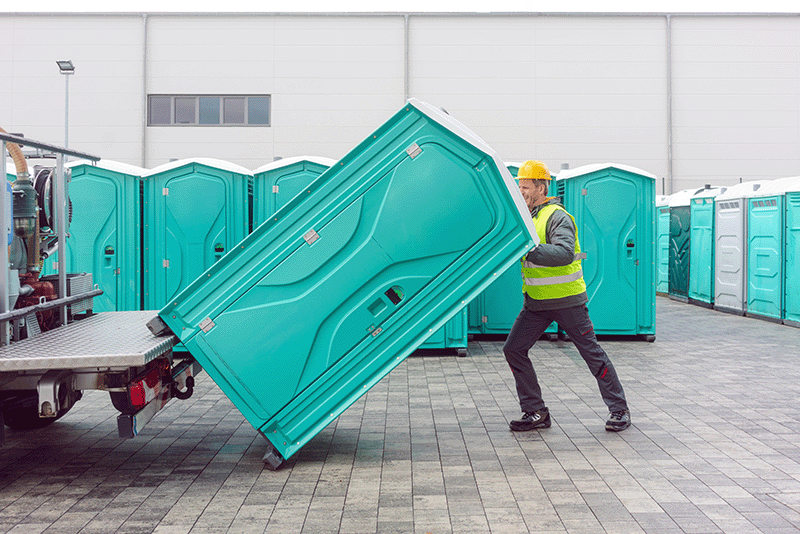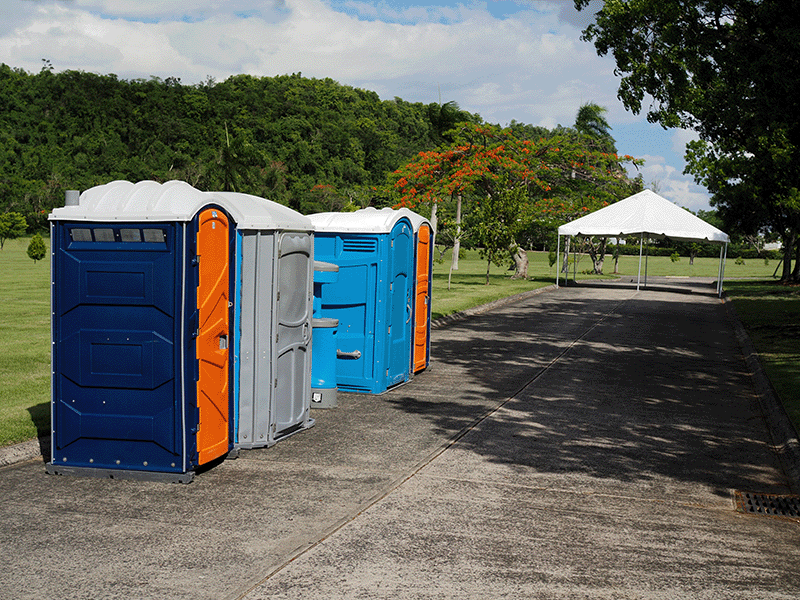Partner with Downstream

Whether you’re managing a multi-acre construction site, planning a weekend festival, or setting up facilities for a disaster response team, portable toilets are probably the least glamorous—but most crucial—thing on your checklist. And while they may not be exciting to talk about, sizing your portable toilet needs wrong can lead to long lines, complaints, and sanitation issues that no one wants to deal with. So let’s break it down: how do you know how many toilets you need? What type should you consider? And what real-world scenarios help you size them correctly?

Let’s face it—nobody wants to talk about porta-potties unless they’re in desperate need of one. But when you plan properly, portable toilets become one of the most appreciated services on-site. They help keep things moving, maintain hygiene, and make sure people aren’t wandering off for extended bathroom breaks.
The trick is: not all portable toilet setups are created equal. From a solo toilet at a roadside crew site to rows of high-end restroom trailers at VIP events, the range is wide. So how do you make the right call?
Here’s a commonly used rule of thumb from industry standards like those found in the Portable Sanitation Association International (PSAI):

Construction Site: Suburban Commercial Build
Let’s say you’re managing a crew of 40 workers on a new retail strip mall with a five-day, 10-hour-per-day schedule. Following the one per 10 rule, you’d start with four standard portable toilets. Add a handwash station or two if you’re dealing with materials like concrete, adhesives, or any chemicals. If it’s winter work, consider heated units or at least ones with winter-grade tanks. If you’re using subcontractors who come in waves, plan around peak crew sizes, not the average.
Outdoor Festival: 1,000 Attendees, 8 Hours
You’re running a local music festival with 1,000 expected guests, live music, food trucks, and—of course—beer. The baseline is one toilet per 50 guests, which comes to 20 toilets minimum. But alcohol increases bathroom usage by up to 40%, so realistically you’ll want 28 to 30 units. For VIP sections, add flushable toilets or restroom trailers with sinks and climate control. Place toilets in shaded, well-lit areas to keep them cooler and safer for night events.
Emergency Response Basecamp: 150 Personnel
In a disaster relief scenario, your mobile operations base serves meals and accommodates 150 people around the clock. Standard formula for workers gives you 15 portable toilets, but since these personnel aren’t just working—they’re living there—you’ll want to bump that number by 25 to 50 percent. Include ADA-compliant units, handwashing stations, and greywater tanks if shower trailers are on-site. Servicing should happen at least once every two days in high-use situations.
Standard Portable Toilet
The classic blue box. No frills, but it gets the job done. Ideal for construction sites and large public events.
Flushable Portable Toilet
Has a foot-pump or electric flushing system. Great for weddings, VIP areas, and private parties.
ADA-Compliant Units
Wider doors, flat entryway, and support bars—required by law for most public setups. Also convenient as family toilets for parents with kids.
Restroom Trailers
Portable bathrooms with multiple stalls, sinks, lighting, and sometimes climate control. Perfect for upscale events, extended job sites, or emergency housing setups. Often require power and water hookups.
Handwashing stations are essential, especially post-2020. These can be standalone units with foot pumps and water tanks. Depending on your setup, you may also need hand sanitizer dispensers, eye wash stations for industrial sites, or shower trailers for disaster recovery and hazmat zones.
Need help figuring it all out? That’s where we come in.
At Downstream, we make it simple to rent the right number and type of portable toilets for any situation. Whether you need basic units for a construction site or full restroom trailers for a multi-day event, our logistics-minded team helps ensure you stay compliant, clean, and on budget.
We work with trusted suppliers across the country and can help you schedule drop-offs, servicing, and pick-up all through one dashboard. No headaches, just solutions.
Portable toilets might not be the most exciting part of planning your jobsite or event—but when you get it right, nobody complains. When you get it wrong, however, you’ll hear about it fast.
Use the sizing guidelines above, think about your real-world needs, and don’t be afraid to rent a few more than you think you need. And if you’re unsure, reach out to pros like Downstream who do this every day.
Your team, your guests, and your nose will thank you.
-min.webp)
Quis nostrud exercitation ullamco laboris nisi ut aliquip ex ea commodo consequat. Duis aute irure dolor in voluptate.
